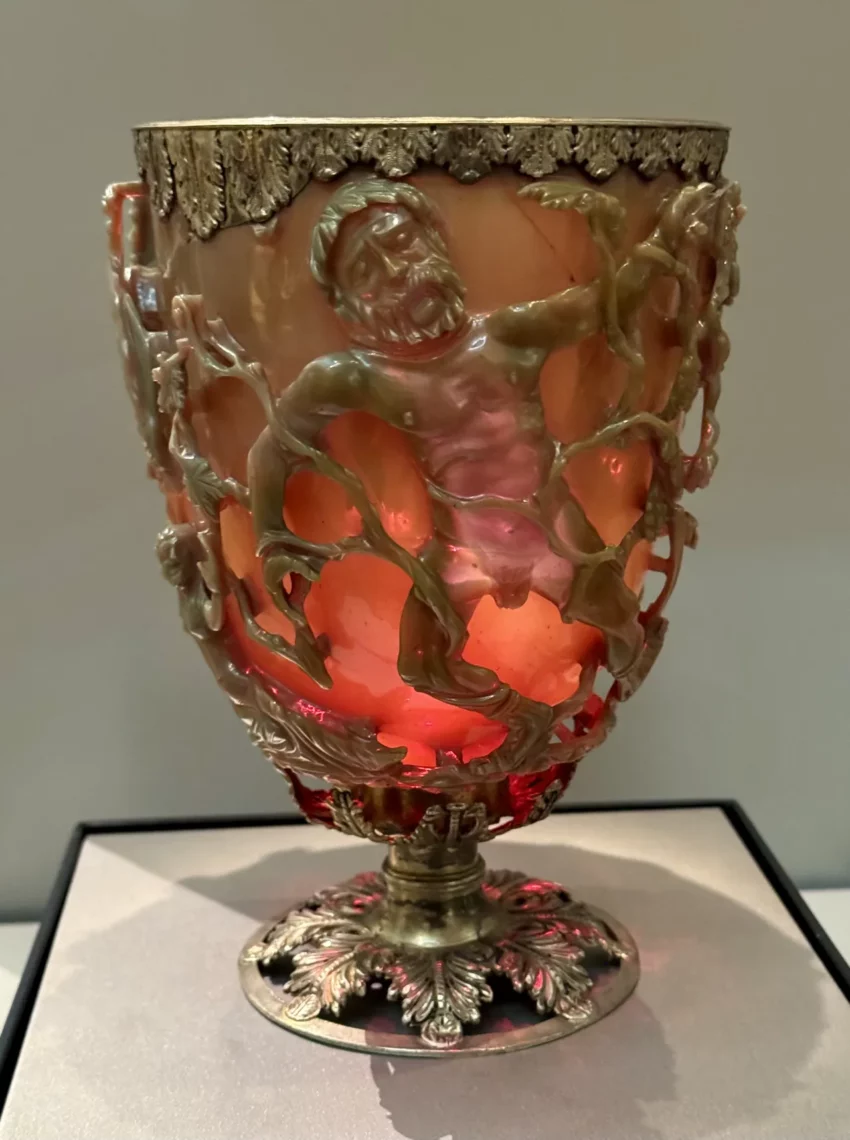The Enchanting Lycurgus Cup: A Roman Marvel of Glass and Science
Imagine a cup that transforms before your eyes, appearing emerald green from one angle and a fiery red from another. This captivating feat of ancient artistry is the Lycurgus Cup, a 4th-century Roman masterpiece crafted from dichroic glass.
Get your dose of History via Email
A Dazzling Display of Color
The Lycurgus Cup stands out not just for its beauty but for its baffling ability to change color. This mesmerizing effect is caused by the presence of tiny gold and silver nanoparticles suspended within the glass. Light hitting these particles scatters in a way that alters the cup’s perceived color depending on the light source.
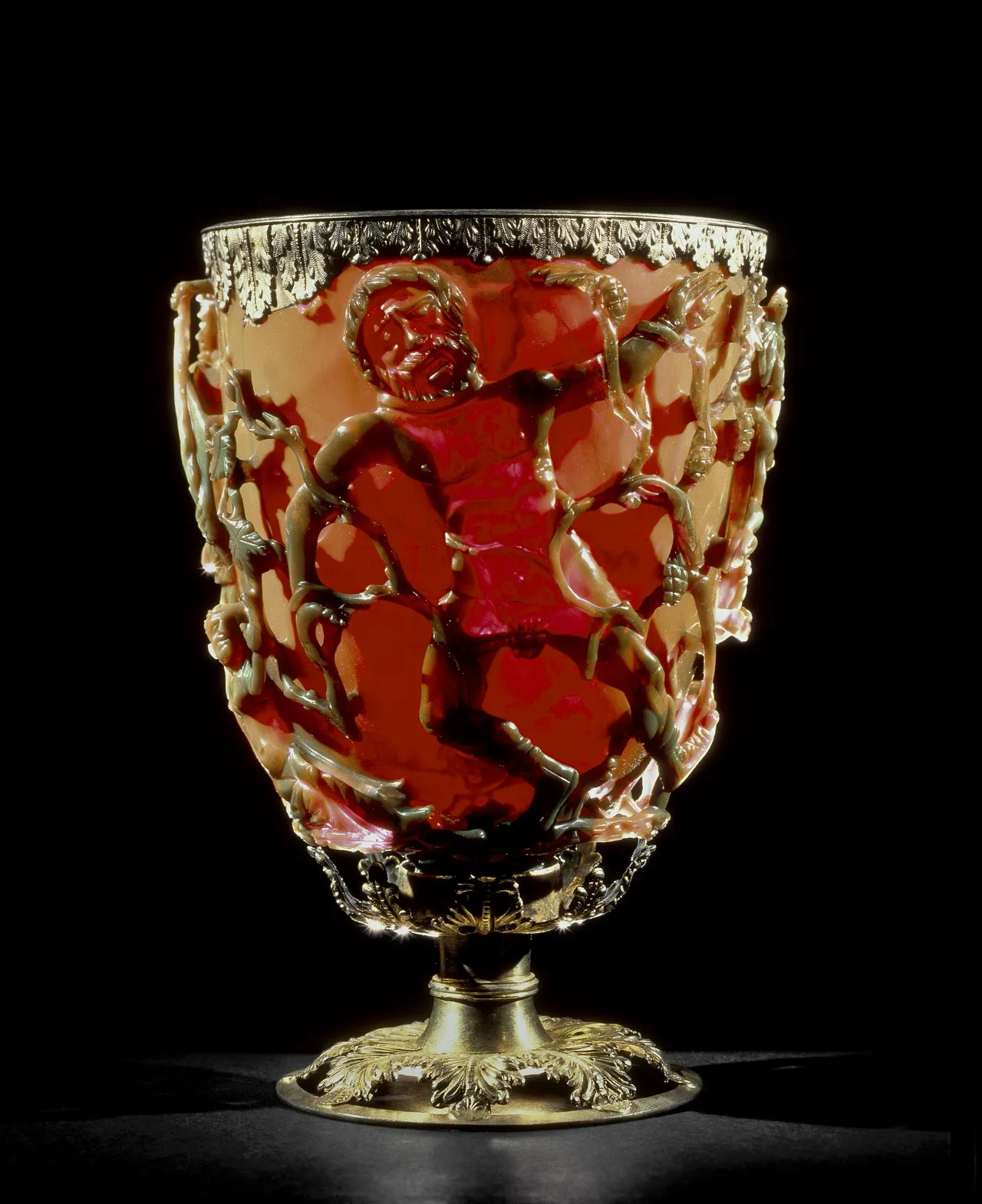
A Journey Through Time
The exact details surrounding the cup’s creation remain shrouded in mystery. Discovered in the 19th century, it is believed to be the work of skilled Roman artisans. The British Museum, which acquired the cup in 1958, offers a glimpse into this captivating artifact (https://www.britishmuseum.org/collection/object/H_1958-1202-1).
A Masterpiece of Glassmaking
Standing roughly 16.5 centimeters tall, the Lycurgus Cup is a prime example of Roman glassmaking expertise. It’s a cage cup, also known as a diatretum, featuring a decorative outer layer that stands apart from the inner surface. Crafting such intricate designs demanded exceptional skill, and the Lycurgus Cup is one of the few surviving examples of this technique.
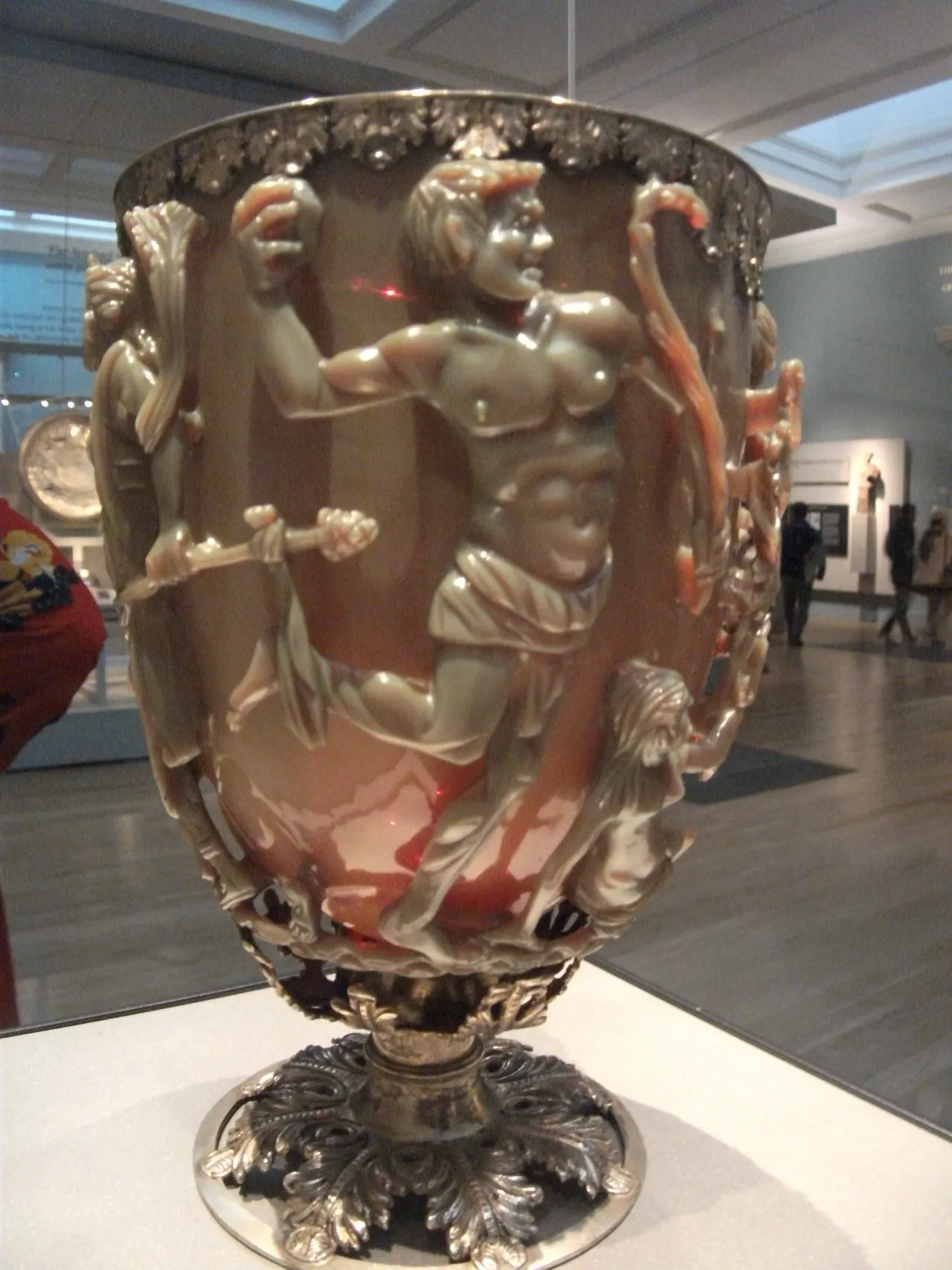
A Window into Mythology
The imagery etched onto the cup depicts a scene from Greek mythology. King Lycurgus of Thrace is shown entangled in vines, a consequence of his attempt to slay Ambrosia, a follower of the wine god Dionysus. This scene may hold religious significance, hinting at a possible connection to Dionysian rituals.
A Legacy of Ingenuity
The cup’s enduring quality speaks volumes about the craftsmanship of Roman glassblowers. Despite its age, it remains in excellent condition, showcasing the remarkable durability of this ancient material.
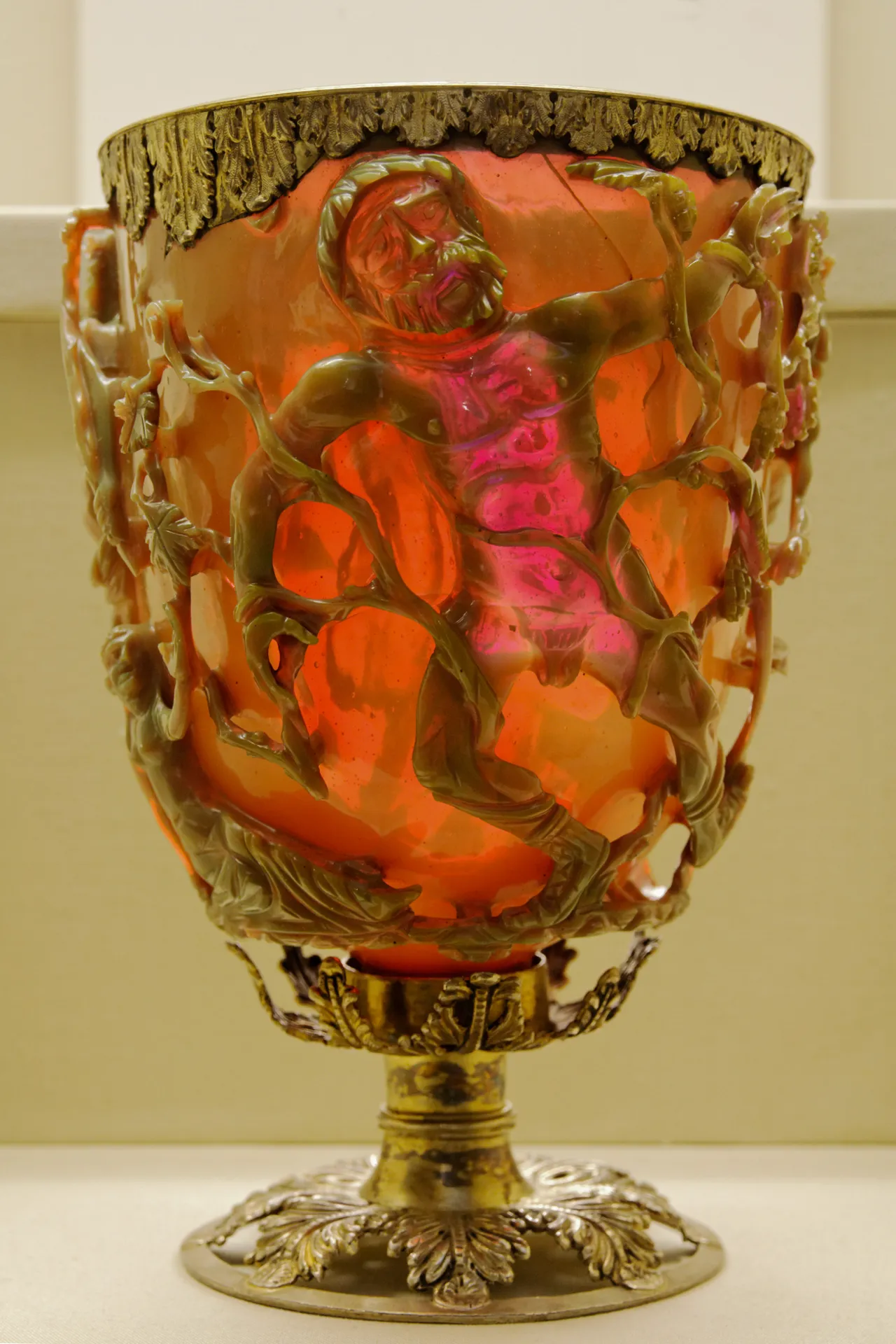
A Scientific Enigma
While the Romans possessed the remarkable ability to create the Lycurgus Cup, the exact techniques used to incorporate nanoparticles into the glass remain a subject of ongoing study. This unsolved puzzle continues to intrigue historians and scientists alike. Modern scientific advancements have helped us unlock the secrets behind the cup’s color-changing properties, offering valuable insights into the field of nanotechnology.
A Timeless Treasure
Today, the Lycurgus Cup resides at the British Museum, captivating visitors with its beauty and scientific marvel. It serves as a testament to the ingenuity of Roman artisans and a reminder of the enduring power of art and science to bridge the gap between past and present.
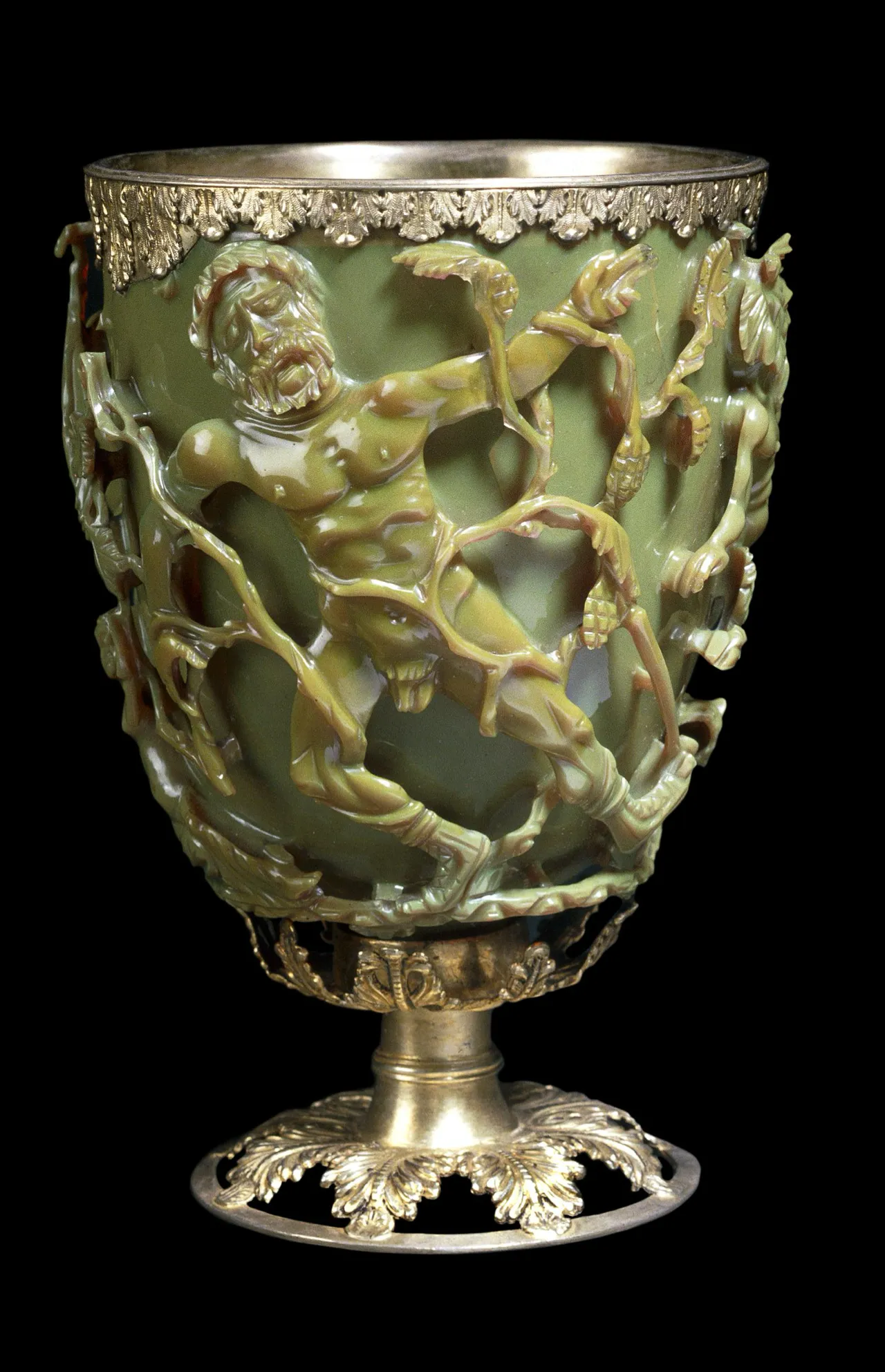
Sources:
- Wikipedia: https://en.wikipedia.org/wiki/Lycurgus_Cup
- British Museum: https://www.britishmuseum.org/collection/object/H_1958-1202-1


